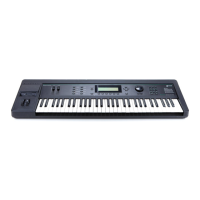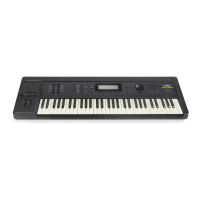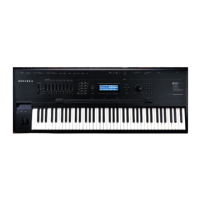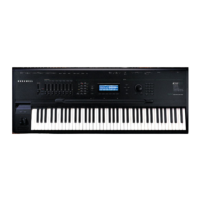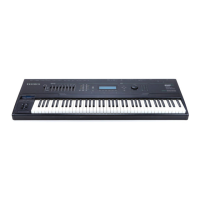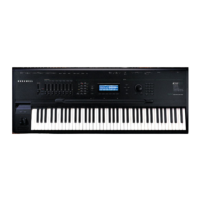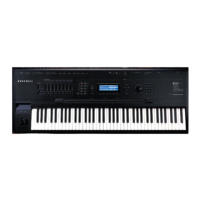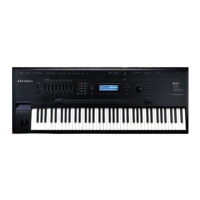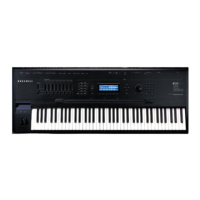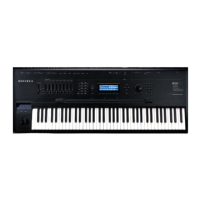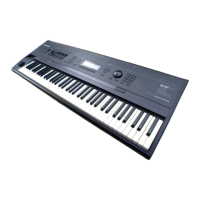Sampling with the K2000
Setting Up For Sampling
2-3
The meters are inoperative during actual sampling, so make a few tests of your levels before you
begin to record.
Rate
After you’ve set your levels, you need to select the sample rate. You have four rates to choose
from. The trade-offs that determine your best sampling rate are frequency response and storage
requirements. Higher sample rates will capture more frequency content from your samples, but
will take up more memory. Lower rates give you more sample time, but don’t give the same
frequency response as higher rates. Rates of 29.4 or 32 KHz will yield a flat response up to about
14 and 15 KHz, respectively. 44.1 and 48 KHz yield a flat response up to 20 KHz, which is the
upper limit of audibility for most humans. The lower rates may be adequate for most sounds,
since many sounds have little content above 15 KHz. Sounds with a great deal of high-frequency
content, such as cymbals, should probably be sampled at the higher rates. You can save memory
by using lower sample rates for sounds without much high-frequency content—acoustic or
electric bass, for example.
Another consideration in selecting sample rate is the K2000’s transposition range during sample
playback. The K2000, like all sample playback devices, transposes samples by changing the
sample playback rate; the higher the playback rate, the higher the pitch of the sample. The
K2000 can achieve a maximum sample playback rate of 96 KHz. A sample made at 48 KHz can
be transposed up only one octave, since the playback rate doubles for every octave of upward
transposition. A sample made at 29.4 KHz can be transposed up approximately 21 semitones (an
octave and a sixth). There is no limit on downward transposition, regardless of the sample rate.
Each portion of a sample (each individual sample element made by the K2000 during the
sampling process) takes up two bytes of sample memory. A one-second stereo sample at 48 KHz
consists of 96,000 individual samples (48,000 x 2), taking up 192,000 bytes (about 188K) of
sample memory. The same sample taken at 32 KHz takes up about 125K. A one-second mono
sample taken at 32 KHz takes up about 63K.
Mode
Use the Mode parameter to select mono or stereo sampling. (Keep in mind that stereo samples
take up twice as much memory as mono samples.) Use a value of Mono(L) for a mono signal.
You can use either Mono(L) or Mono(R) to isolate either the left or right side of a stereo signal.
Version 3 only
The Audio Sampling Input (K2000S/RS / SMP-K/R) now doubles as a two channel “drum”
trigger, allowing audio signals to trigger samples.
1. On the Sample page, set the Mode parameter to Trigger.
2. Adjust the Thresh parameter to control triggering sensitivity.
This triggers the currently assigned click program. The left input triggers the note one
semitone aboue the click key; the right input triggers the note two semitones above the
click key. (In other words, if the click key is, say, C 4, the left input triggers C# 4, and the
right input triggers D 4.) You can select both the click key and the click program on the
MISC page in Song mode.
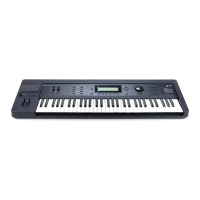
